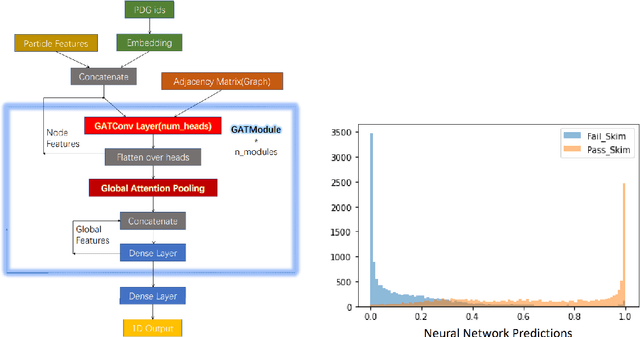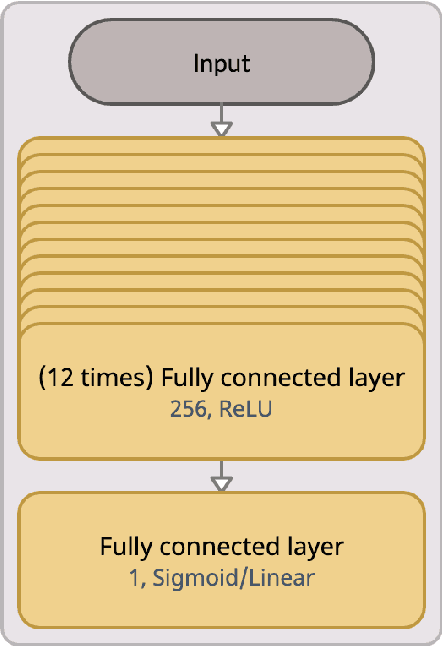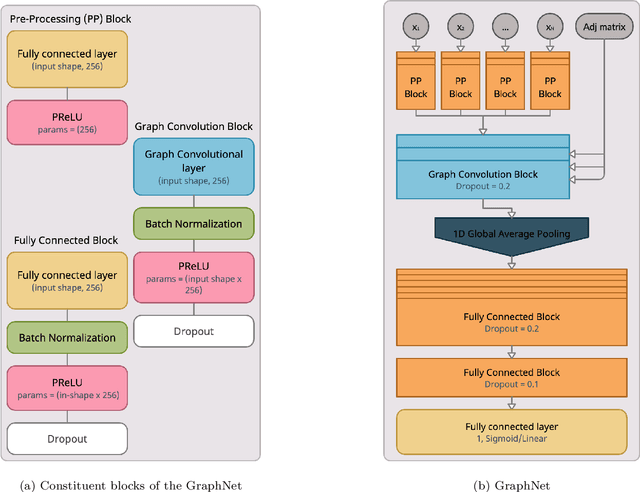Nikolai Hartmann
Improved selective background Monte Carlo simulation at Belle II with graph attention networks and weighted events
Jul 12, 2023



Abstract:When measuring rare processes at Belle II, a huge luminosity is required, which means a large number of simulations are necessary to determine signal efficiencies and background contributions. However, this process demands high computation costs while most of the simulated data, in particular in case of background, are discarded by the event selection. Thus, filters using graph neural networks are introduced at an early stage to save the resources for the detector simulation and reconstruction of events discarded at analysis level. In our work, we improved the performance of the filters using graph attention and investigated statistical methods including sampling and reweighting to deal with the biases introduced by the filtering.
Ultra-High-Resolution Detector Simulation with Intra-Event Aware GAN and Self-Supervised Relational Reasoning
Mar 07, 2023Abstract:Simulating high-resolution detector responses is a storage-costly and computationally intensive process that has long been challenging in particle physics. Despite the ability of deep generative models to make this process more cost-efficient, ultra-high-resolution detector simulation still proves to be difficult as it contains correlated and fine-grained mutual information within an event. To overcome these limitations, we propose Intra-Event Aware GAN (IEA-GAN), a novel fusion of Self-Supervised Learning and Generative Adversarial Networks. IEA-GAN presents a Relational Reasoning Module that approximates the concept of an ''event'' in detector simulation, allowing for the generation of correlated layer-dependent contextualized images for high-resolution detector responses with a proper relational inductive bias. IEA-GAN also introduces a new intra-event aware loss and a Uniformity loss, resulting in significant enhancements to image fidelity and diversity. We demonstrate IEA-GAN's application in generating sensor-dependent images for the high-granularity Pixel Vertex Detector (PXD), with more than 7.5M information channels and a non-trivial geometry, at the Belle II Experiment. Applications of this work include controllable simulation-based inference and event generation, high-granularity detector simulation such as at the HL-LHC (High Luminosity LHC), and fine-grained density estimation and sampling. To the best of our knowledge, IEA-GAN is the first algorithm for faithful ultra-high-resolution detector simulation with event-based reasoning.
PE-GAN: Prior Embedding GAN for PXD images at Belle II
Mar 01, 2023



Abstract:The pixel vertex detector (PXD) is an essential part of the Belle II detector recording particle positions. Data from the PXD and other sensors allow us to reconstruct particle tracks and decay vertices. The effect of background hits on track reconstruction is simulated by adding measured or simulated background hit patterns to the hits produced by simulated signal particles. This model requires a large set of statistically independent PXD background noise samples to avoid a systematic bias of reconstructed tracks. However, data from the fine-grained PXD requires a substantial amount of storage. As an efficient way of producing background noise, we explore the idea of an on-demand PXD background generator using conditional Generative Adversarial Networks (GANs) with contrastive learning, adapted by the number of PXD sensors in order to both increase the image fidelity and produce sensor-dependent PXD hitmaps.
Shared Data and Algorithms for Deep Learning in Fundamental Physics
Jul 01, 2021



Abstract:We introduce a collection of datasets from fundamental physics research -- including particle physics, astroparticle physics, and hadron- and nuclear physics -- for supervised machine learning studies. These datasets, containing hadronic top quarks, cosmic-ray induced air showers, phase transitions in hadronic matter, and generator-level histories, are made public to simplify future work on cross-disciplinary machine learning and transfer learning in fundamental physics. Based on these data, we present a simple yet flexible graph-based neural network architecture that can easily be applied to a wide range of supervised learning tasks in these domains. We show that our approach reaches performance close to state-of-the-art dedicated methods on all datasets. To simplify adaptation for various problems, we provide easy-to-follow instructions on how graph-based representations of data structures, relevant for fundamental physics, can be constructed and provide code implementations for several of them. Implementations are also provided for our proposed method and all reference algorithms.
 Add to Chrome
Add to Chrome Add to Firefox
Add to Firefox Add to Edge
Add to Edge